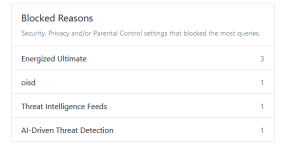@oldschool Nice

Most used tracking methods are cookies, tracking pixels and tracking parameters and server side tracking.
Server side tracking is for tracking users across sessions and devices for a single website. Google is 'helping' us with our privacy by reducing the client side tracking options. No surprise that Google already offers server side tracking solution (
link). By increasing our privacy Google is in fact making it harder for their competitors to offer similar level over cross session and cross device user tracking (remember Google = Android).
Edge anti-tracking on default blocks storage and access for Cryptomining and Fingerprinting and blocks storage for Advertising and Content (
link). Blocking storage access (client side) Edge also blocks tracking cookies and tracking pixels (and ads). When blocking third-party storage access, you also block content which is served from content delivery networks and other websites belonging to that same organisation (e.g. cnn.com and cnn.io, turner.com). To prevent website breakage Edge uses the Disconnect organisation entities and measures your site engagement (e.g. when you visit it a lot, or have that website bookmarked Edge allows more). In default Edge blocks a lot (some fingerprinting and most tracking cookies, pixels and advertising content), while preventing website breakage.
I use Edge in default, because this blocks the hard to deal with cross website tracking pixel for different organizational entities. I use AdGuard or UBlockOrigin to block access to advertising and tracking networks (does not matter what anti-tracking blocklist you use) AND I enable AG's remove URL tracking parameters to prevent parsing tracking parameters using the URL to third-party websites. This appproach also blocks tracking across websites belonging to the same entity and blocks more trackers than Edge in STRICT because Edge is afraid to break websites it has a conservative approach to what (Disconnect) categories to block. When I encounter a problem, I simply disable AdGuard or uBlockOrigin to fall back to EDGE anti-tracking in default.
Note:
Because I expect server side tracking to grow, I have removed Google tagmanager from my Kees1958 list (which only blocks third-party and does not block server side tracking) and I have added it to MyFilter as first-party to break the Google server side tracking chain and to see how much websites break with this extra rule. When thise pans out alright, I will remove other tag-management services from my Kees1958 list (which are third-party blocks) and move them to a separate list where they will be blocked as first-party. So when people are on Firefox or Edge using the browsers build-in adblocker in default mode, they can add this more aggressive first-party blocklist to AG/uBO (and set allow exceptions in AG/uBO when they encounter website breakage).
